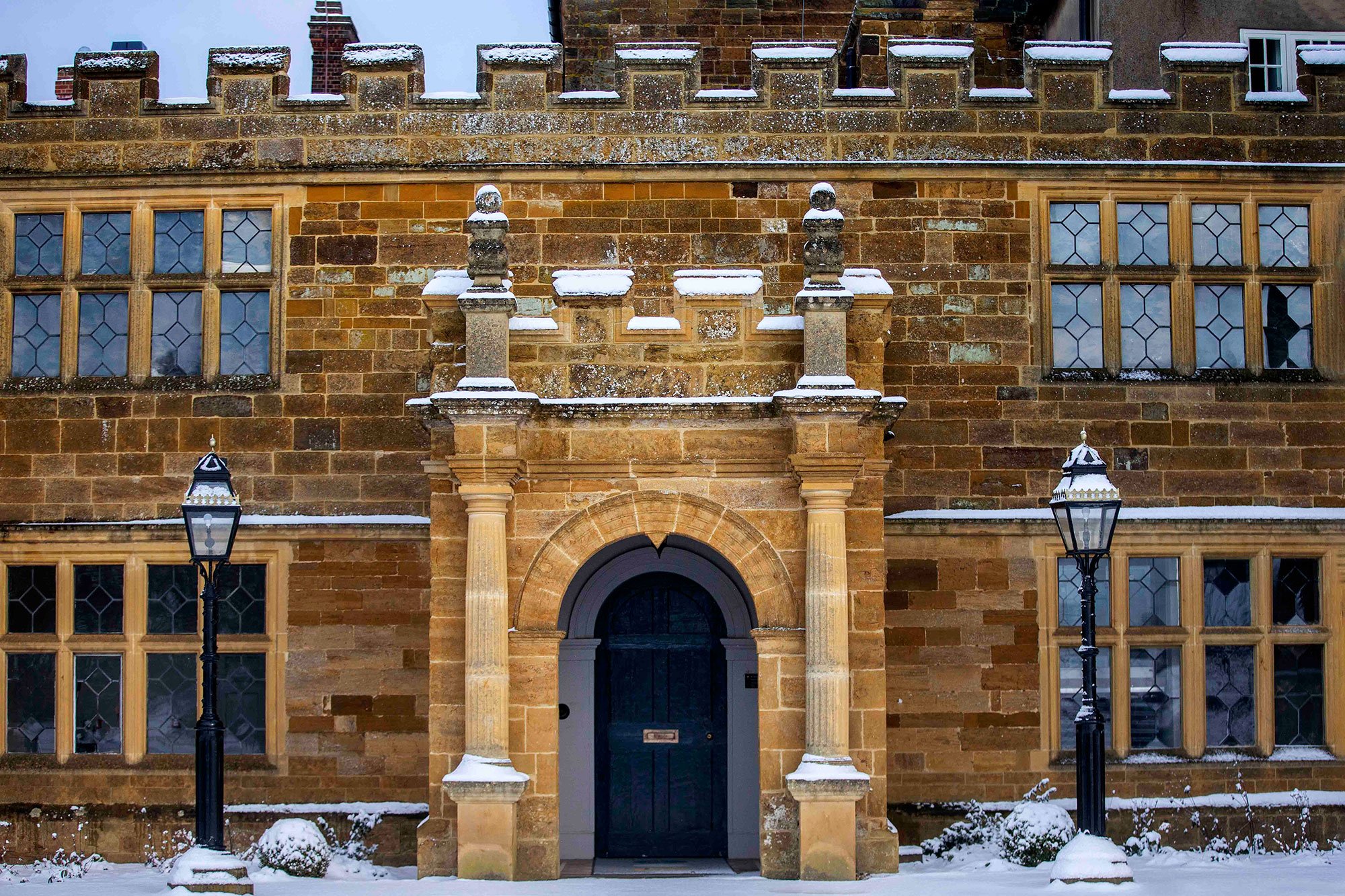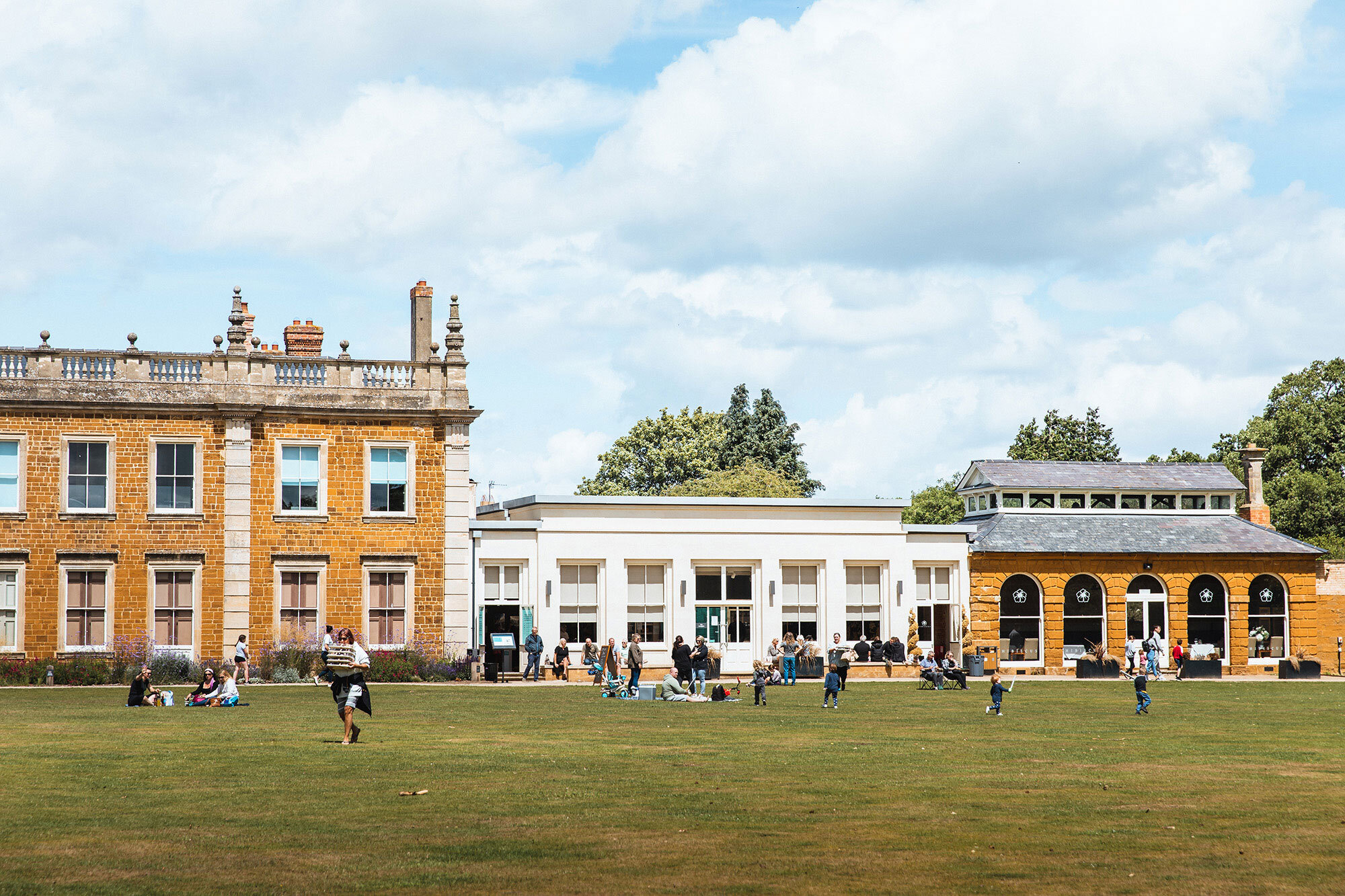The Sisters of St Mary, De La Pré
Early days at Delapré Abbey
by Laura Malpas
When driving through bustling Northampton in a residential area full of traffic, supermarkets and light industry, there is a big surprise awaiting those who turn onto a quiet leafy green drive. Suddenly, you find yourself in the huge grounds of an ancient country estate. It’s an absolute wow!
The story of Delapré Abbey begins nearly nine hundred years ago, when three generations of the de Senlis family, Earls of Northampton, and great benefactors to the town, built the castle, the church of the Holy Sepulchre, St Peter’s Marefair, and St Andrew’s Priory and the Nunnery of St Mary de la Pré, (eventually known as Delapré Abbey).
Both the Priory and the Nunnery belonged to the French Cluniac monastic tradition, but whilst the monks of St Andrews lived and worshipped inside the mediaeval town walls of Northampton, the sisters of St Mary were housed outside the town, on the opposite bank of the river Nene ‘in the meadow’, ‘de la pré’ in French.
It was a relatively small community, with fewer than twenty nuns at any one time. Life was highly regulated and total obedience was required. The focus of the Cluniac tradition was on continual prayer, demanding worship eight times per day in a strict timetable of daily offices. One of the primary roles of the nuns was to say daily prayers for the soul of the first Simon de Senlis, the father of the abbey’s benefactor. The Abbey church became an important focus in the area, with the nuns providing safe accommodation for travellers, an infirmary for the sick, and food, bread and fish, for the poor and needy.
Delapré Abbey today
In December 1290, the nuns of the Abbey hosted a Royal visitor. Sadly, the beloved queen of Edward I, Eleanor of Castile, had died whilst on a journey through the Midlands. She passed away in Lincolnshire, and her bereft husband wished to bury her with the greatest ceremony. Her body was transported to London in an elaborate procession, and at every overnight stopping place Edward commanded a cross be raised to mark the route of the cortege. It would have been a privilege for the sisters of the Abbey of St Mary De la Pré to watch over the queen on her final journey, the Abbess Margery de Wollaston gathering her nuns for the overnight vigil. The recently restored Eleanor Cross can still be seen today on London Road outside Delapré.
The next time the Abbey of St Mary de la Pré enters the chronicles of England’s history is on 10th July 1460, in what became known as the Battle of Northampton, the first significant encounter in the Wars of the Roses. This battle was fought all around the Abbey, and it must have been a terrifying experience for the nuns and the Abbess Gonora Doughton.
“The last time the nuns of the Abbey of St Mary de la Pré appear in history is at the time of the Reformation, when in 1536 Henry VIII ordered the dissolution of the monasteries.”
Watching the battle unfold from the vantage point of the Eleanor Cross, were the Archbishop of Canterbury and the Italian Francisco Coppini sent by the Pope as a diplomat to negotiate peace between the embattled Houses of York and Lancaster. As the two men looked down to the Abbey and the meadows of the Nene, they would have seen well over twenty thousand men ready to fight.
Then Coppini raised the standard of the Pope and struck fear into the hearts of the men supporting the King. Coppini announced excommunication for any who were killed fighting for Lancastrian King Henry VI forbidding them a Christian burial. Any killed fighting for Richard Neville, the Earl of Warwick and the Yorkist heir Edward would be forgiven their sins. This was a demoralising blow for the King’s men in this time when dying a blessed death meant a heavenly afterlife, and excommunication would have resulted in eternal damnation.
The meadows around the abbey witnessed a violent and bloody battle, no doubt the nuns were praying for the souls of those who were falling in battle around them. The Yorkists prevailed, and Lancastrian King Henry was captured and imprisoned in the Abbey, where he heard mass and prayed. The dead numbered in the thousands. Many bodies were carried away by the river, and many may still lie undiscovered. Of course, King Henry’s Lancastrian soldiers were forbidden burial on consecrated ground, so no doubt their dead were buried close to where they fell, probably in grave pits well away from the Nuns.
The last time the nuns of the Abbey of St Mary de la Pré appear in history is at the time of the Reformation, when in 1536 Henry VIII ordered the dissolution of the monasteries. This was a catastrophic event for all religious institutions, and despite vigorous attempts to resist closure by Clemencia Stock, the very last Abbess, the nunnery was closed. She had managed to hold out for two years and negotiated pensions for the women before they were turned out of the Abbey.
After the closure, the Abbey passed into private hands, and its subsequent history will be the subject of further articles, as there is so much to learn and enjoy.
Delapré Abbey being enjoyed by the public
In 2018 after a turbulent history, Delapré Abbey was fully restored and opened for the community it once served to enjoy today. The property is run by the Delapré Abbey Preservation Trust with a small staff team and around 120 dedicated volunteers. Volunteers cover all sorts of roles, from tending the grounds and gardening, looking after visitors, helping with events, and acting as guides. And of course, the volunteers take a very active role in researching the rich and fascinating stories of the ancient place they are supporting. Volunteers have uncovered tales of scandal, intrigue, and romance.
In a pleasing symmetry, during Covid a small team of women volunteers decided to discover more about the community of Cluniac nuns who lived there for the first four hundred years of Delapré’s history. Volunteers Antoinette, Brigitte, Chris, Jo, Vera and Violetta researched into the lives of the nuns and Abbesses, uncovering many previously untold stories, and providing the basis for this article. They also discovered more about the infirmary and provided information for the mediaeval herb garden and its potential for curing the sick. This research can be seen displayed in an engaging exhibition which has appeal for all the family.
Volunteer research is always ongoing, and results are shared with the public in many ways. There are tours that I am very much looking forward to, ‘The Mystery of the Lady in the Library’, and ‘Scandalous Georgians’ in particular!
If the idea of joining this vibrant volunteering community appeals to you, there are opportunities for all sorts of roles, the team there will give you a warm welcome and all the training you need. What a great start to the New Year!
For more information about Delapré Abbey, events, or volunteering, visit Delapré Abbey’s website today.



